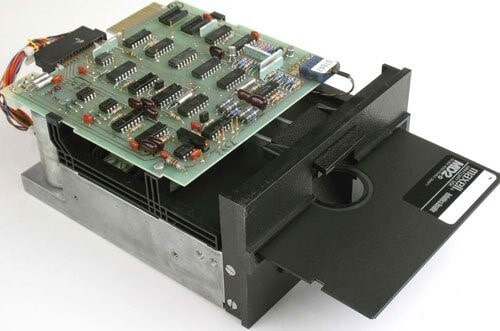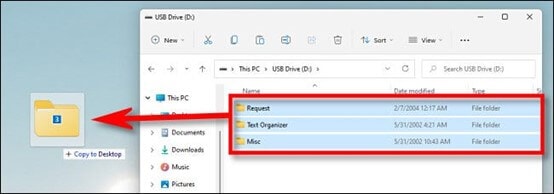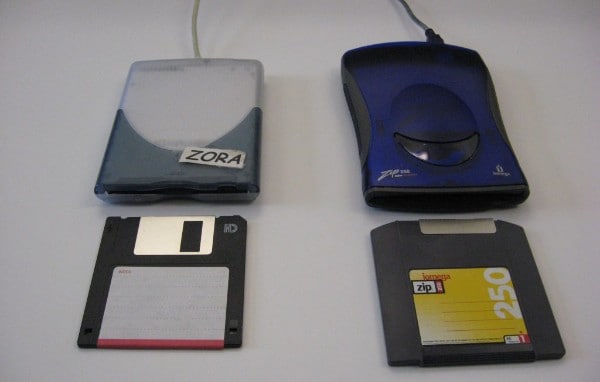
Portable storage for computers has been evolving from the beginning of time. Iomega introduced Zip drivers in the mid-90s, and they provided more storage. Zip drivers also offer faster transfer times than floppy disks. However, with so much technology and the advancements that came with flash drives, zip drives became primarily known. If you’re asking what is a zip drive? This article will answer your question and tell you everything you need to know. On that note, let’s dive right in.
Related article >>: How to recover zip files?
What Is Zip Drive?
A zip drive is like removable disk storage designed for computers introduced in the mid-1990s. The zip drive is quite similar to a DVD in many ways. However, zip disks are inserted into them. You can install internal zip drives on your computer and opt for the external drives that need plugging into the PC.
The zip drive looks similar to floppy disk drives. The external zip drivers are about 2 inches thick and 4.5 inches wide. There’s also 5-6 inches long. Internal zip drives, on the other hand, are larger and thicker. Most zip disks hold about 100 MB of storage. However, there were upgrades in the 1990s to include 250 MB and 750 MB options.
How Does Zip Drive Work?

A zip drive system contains a zip disk and slot for the zip disk. Apart from a large storage capacity, a zip drive offers a high data transfer rate. Data moves fast between the computer’s internal storage and the disk. Hence, seek time refers to the time it takes to find a location on the disk to write or read data. It would help if you connected to the computer to read or write data on the zip drive. Then, you install the internal drive directly inside the computer case like you would with an optical drive.
You cannot easily remove it by connecting it to the computer motherboard. On the other hand, the external zip drive comes in a separate casing and connects to the computer using a connector cable. While some use a parallel port connection, others utilize a USB connection. The zip drives that use a parallel port connection require a separate power supply to be used.
How to Use Zip Drive?
It’s pretty easy to use a zip drive. If you want to open the files in the zip drive, follow the steps below.
- Step 1. Plug in the drive if it is external; you might have to install a driver for it if you haven’t used the drive before. Most times, it comes with the software necessary to install the driver.
- Step 2. Next, put the disc in the drive, external or internal.
- Step 3. Click the PC’s start button on the lower-left corner of your screen and choose ‘my computer.’
- Step 4. This would open a new window with your drives: the C: drive, removable drive, and zip drive.
- Step 5. Double click the zip drive to open a new window showing all the content saved in the drive.
- Step 6. You can open any files by double-clicking on it or right-clicking on your chosen file and selecting ‘open’ from the menu.
- Step 7. To copy any file, you can select the file and press CTRL + C simultaneously or drag the file to the location you want. Alternatively, you can right-click and pick ‘copy’ from the list of options.
- Step 8. Next, navigate to the location you want and paste it there.

Note that Windows can read Zip disks formatted with NFTS, FAT, exFAT, or even FAT32 formats. This is common with MS-DOS and Windows used over the years.
History And Evolution of Zip Drive
The first zip drive system was created in 1994 by Iomega. It was able to hold about 100 MB of information. The zip drive system came with a drive with a slop where you could fix the zip disk it also came with, which made the drive cost below $200; it was an instant success as people were glad to have a storage device where they could store files too large to be saved on a floppy disk. Over the years, the manufacturers increased it to 250 megabytes and then 750 megabytes. At the same time, Iomega also worked on the drive’s data transfer speed.
You could insert, remove, transfer and read the data in the zip drive on any computer. The zip drive utilized different interfaces, including ATAPI, Plus, IDE, USB 1.1, SCSI, and IEEE 1248. These interfaces allowed easy communication between the drive and the computer. However, as competition began to pop up due to companies creating their versions of the zip drive, the price of the 100 MB zip drive reduced significantly.
External Zip Drive VS. Internal Zip Drive
Earlier, we clarified that a zip drive could be either external or internal. You install the internal zip drive in the computer’s tower or casing. On the other hand, the external zip drivers were devices with their unique casings. You can operate them externally; they come with a cable you can use to plug them into the computer. The type of port used on external zip drives depends on the interface used. For example, you could choose between parallel or USB ports. The Iomega Zip drive came with parallel ports. Unlike the internal zip drive, which was difficult to remove after installation, you can easily disconnect the external disk drive after use.
Zip Drive VS. Floppy Drive

Zip drive and floppy drive are similar in many ways. They’re both storage devices that you can use to store digital data for viewing and transferring. Floppy and zip drive also help you back files on your PC. However, despite the similar functions they perform, there are also salient differences between both files.
Many would agree that the significant difference between floppy and zip drives is the amount of data they can hold. Traditionally, floppy drives came in two file sizes: 1.44 MB and 2.88 MB. This means that it can only hold a small amount of data. On the other hand, the minimum storage capacity of a zip drive is 100 MB. It also offers 250 MB and 750 MB storage capacity.
While a zip drive can read a floppy disk, floppy drives cannot read zip drives because of their narrow tracks and how fast they spin. As a result, zip drives are a safer option for storing data. They also have a faster data transfer rate, meaning they can easily read and write large files. You don’t need to wait hours before your data transfer is complete.
You can easily add and erase files from zip drives. They are also compatible with Windows and Mac OS. This isn’t the case with floppy drives, as most PCs don’t support them today. So while floppy disks are cheaper, zip drives are the safest.
Conclusion
A removable storage system that showed up in 1994, zip drives quickly became a popular choice for people. For those asking what is zip drive in computer, you’ll find all the answers you need in this article. It was fast becoming the more popular storage device. It also gained a niche in the portable storage market. There are two varying types of storage devices, and this article will ensure you can easily differentiate between the two. Compared to floppy drives, they’re more convenient and have a larger capacity. Their performance is also significantly higher than that of a floppy disk.

 ChatGPT
ChatGPT
 Perplexity
Perplexity
 Google AI Mode
Google AI Mode
 Grok
Grok























